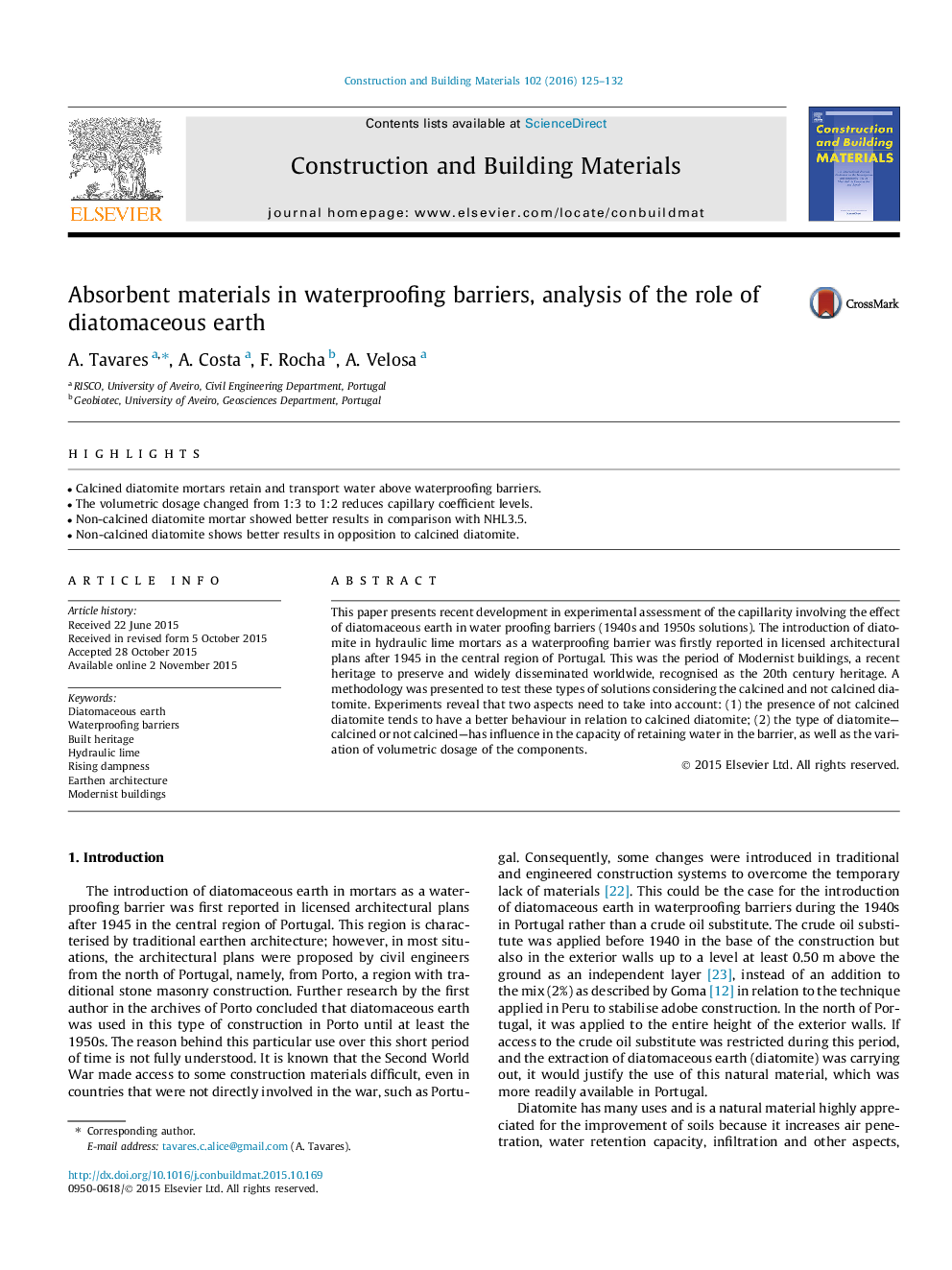| Article ID | Journal | Published Year | Pages | File Type |
|---|---|---|---|---|
| 10285004 | Construction and Building Materials | 2016 | 8 Pages |
Abstract
This paper presents recent development in experimental assessment of the capillarity involving the effect of diatomaceous earth in water proofing barriers (1940s and 1950s solutions). The introduction of diatomite in hydraulic lime mortars as a waterproofing barrier was firstly reported in licensed architectural plans after 1945 in the central region of Portugal. This was the period of Modernist buildings, a recent heritage to preserve and widely disseminated worldwide, recognised as the 20th century heritage. A methodology was presented to test these types of solutions considering the calcined and not calcined diatomite. Experiments reveal that two aspects need to take into account: (1) the presence of not calcined diatomite tends to have a better behaviour in relation to calcined diatomite; (2) the type of diatomite-calcined or not calcined-has influence in the capacity of retaining water in the barrier, as well as the variation of volumetric dosage of the components.
Related Topics
Physical Sciences and Engineering
Engineering
Civil and Structural Engineering
Authors
A. Tavares, A. Costa, F. Rocha, A. Velosa,
